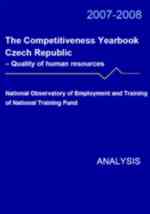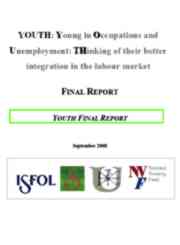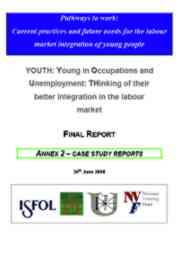

2008

The Competitiveness Yearbook of the Czech Republic 2007-2008
The content of this publication, which is the third of its kind, was influenced by the availability of data from new surveys. In particular, these include the PISA study that examines the level of literacy in fifteen-year-old pupils, and the CVTS 3 survey focused on staff training in companies. Moreover, for the first time attention is focused not only on an analysis of data mapping the past, but also on an analysis of forecasted development of demands for the skills of human resources. The publication is traditionally divided into three chapters. The first chapter assesses and compares, in international terms, the level of literacy in fifteen-year-old pupils and the educational attainment of the population. The second chapter concerns employment with a particular focus on technology-intensive industries. Furthermore, it deals with the future requirements for skilled labour in the CR and the preparation of human resources for skills-intensive occupations. The third chapter provides an analysis of various aspects related to the training of employees in enterprises, and changes in the requirements for their knowledge and skills in several selected industries.
The competitiveness yearbook of the Czech Republic : Chapter Quality of human resources ![]()

Youth Project: Final Report
This document constitutes the Final Report of the research project, "Young in Occupations and Unemployment: THinking of their better integration in the labour market", (Youth Project), which the European Commission assigned to ISFOL (It), as main contractor, in partnership with CESOS (It), Szent Istvan University (HU) and NTF - National Training Fund (CZ), subcontractor CERES and Melius S.r. The two year study (2007-2008) was aimed to provide a wider knowledge of youth labour-market trends and to define the main challenges that youth integration policies have to tackle in coming years in order to adopt suitable correctives. This Final Report presents the results and findings of the project with the most relevant conclusions. It also includes policy recommendations and suggestions in terms of strategies and concrete cross-cutting measures and practices for supporting and improving young people's transition pathways to work in a balanced flexicurity approach.
Download ![]()

Youth Project: Case study reports
This report contains the analytic description of the seven case studies selected in the Youth research project: Denmark, Germany, Italy, United Kingdom, Czech Republic, Romania and Hungary. The report begins with a brief introduction, followed by the description of the methodological approach adopted in the analysis of the flexicurity policy measures and in the preparation of case studies. For each of the seven contexts surveyed, two types of documents have been prepared:
- The synoptic table, in which the measures follow an individual's lifecycle and the various conditions he/she has to face (e.g. leaving general education, return to training, access to work, career development, creation of a family, etc.);
- The descriptive case-study report, in which the chosen flexicurity measures are analysed and described with reference to the institutional, political, social and demographic context of their adoption and implementation in the country in question.
Download ![]()


